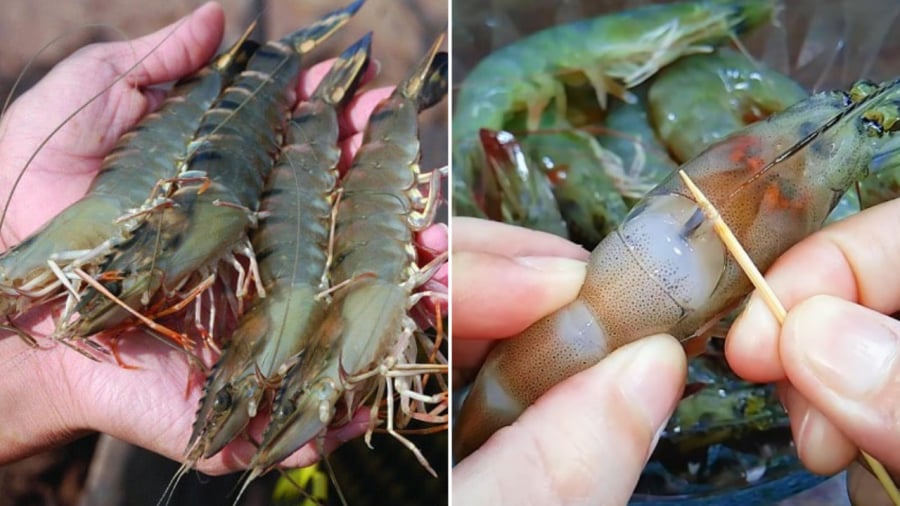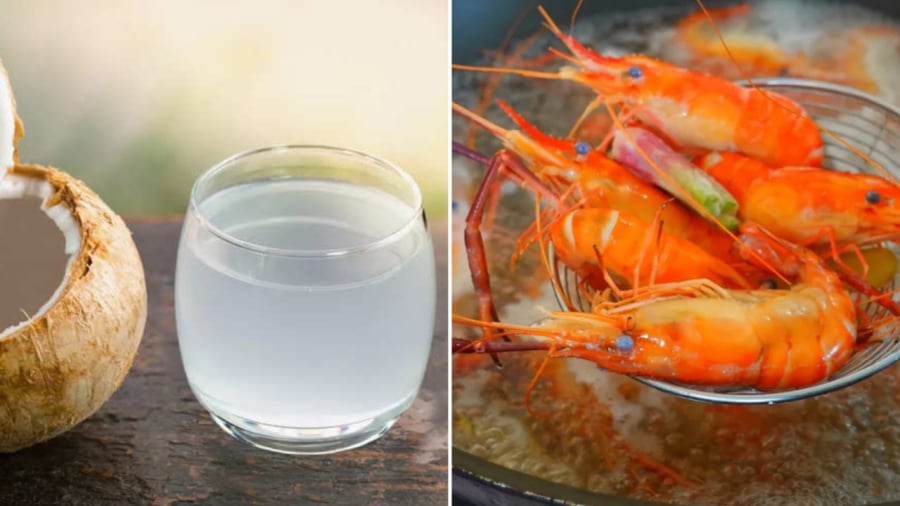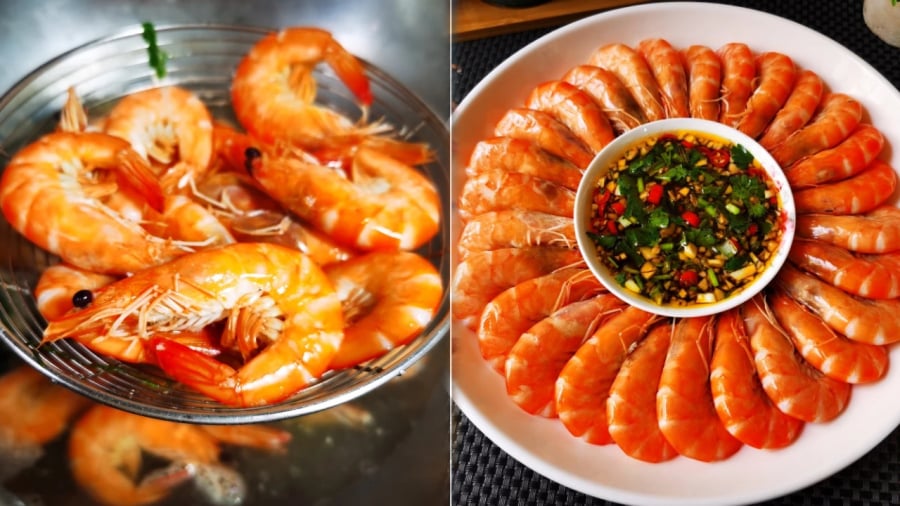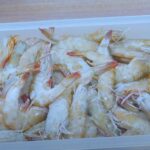Boiled shrimp is a popular and well-loved dish, known for its simple preparation that highlights the natural flavor of the shrimp. This versatile dish can be enjoyed with a variety of dips, from a tangy and spicy seafood sauce to a simple combination of salt, lemon, and chili paste. Boiled shrimp is also a great ingredient to include in other dishes such as shrimp and pork spring rolls, rice vermicelli, and noodles.
While boiling shrimp is a straightforward process, there are some secrets to ensuring the shrimp remain sweet and free from any fishy odor. Traditionally, shrimp are boiled in plain water. However, by using alternative liquids, you can enhance the flavor and appeal of boiled shrimp.
Selecting the Best Shrimp
Fresh, live shrimp are the best option. When purchasing shrimp, look for those that are actively swimming with clear, glossy shells. Press your finger into the shrimp’s body; it should feel firm, and the head should be firmly attached to the body with intact antennae, legs, and claws.
If you’re buying frozen shrimp, opt for a reputable source. Avoid shrimp with yellowing shells or those that feel too hard, as they may have been treated with sodium bisulfite, a bleaching agent. Also, steer clear of shrimp with any strange odors.
Preparing the Shrimp

Before boiling shrimp, it’s important to remove any strong fishy odor through a simple preparation process.
Once you’ve purchased your shrimp, give them a good rinse. Trim any excessively long antennae. You can also remove the black vein along the shrimp’s back to eliminate any impurities and improve the taste. For boiled shrimp, it’s best to use a toothpick or a sharp, thin knife to gently lift the vein out. Alternatively, you can use scissors to snip off the tip of the shrimp’s head, then push out the waste along with the vein.
After cleaning the shrimp, marinate them in half a cup of white wine. This step helps to eliminate any remaining fishy odor and gives the shrimp a beautiful red color.
Alternative Boiling Methods Without Plain Water
– Boiling Shrimp in Coconut Water

Using coconut water to boil shrimp adds a subtle sweetness and enhances the natural flavor of the shrimp.
Instead of plain water, try using coconut water for a unique twist. Pour coconut water into a pot and add a pinch of seasoning. Don’t forget to include some aromatics like ginger and lemongrass to enhance the flavor. Bring the coconut water to a gentle simmer, then add the shrimp. Cover and cook over medium heat for 1 minute. Open the lid, give the shrimp a quick stir, and continue cooking for another minute. Once the shrimp turn a vibrant orange-red color, turn off the heat.
Remove the shrimp from the pot and let them drain in a colander for a moment before arranging them on a serving plate.
The natural sweetness and richness of coconut water elevate the flavor of the boiled shrimp.
– Boiling Shrimp in Wine

Wine not only helps retain the sweetness of the shrimp but also eliminates any fishy odor and imparts a beautiful color.
Combine the shrimp with a small amount of wine (for 400 grams of shrimp, use about 30ml of white wine or cooking wine) in a pot. Add seasonings like ginger, lemongrass, and scallions, and give it a good stir. Place the pot on the stove, cover it, and boil the shrimp for approximately 5 minutes over medium heat.
When the shrimp turn a vibrant orange-red and their bodies curve slightly, uncover the pot, reduce the heat, and continue cooking for about 2 more minutes to let the alcohol evaporate.
This method ensures the shrimp remain tender and sweet, without any fishy odor.
– Boiling Shrimp with Salt
This unique method involves boiling shrimp without any water at all, using salt instead.
You’ll need a pan or pot, preferably made of cast iron or stainless steel, not non-stick. Spread a layer of salt at the bottom of the pan and top it with a layer of sliced ginger or lemongrass and scallions. Place the shrimp on top and add another layer of aromatics. Turn on the heat to low-medium to warm the ingredients gently. Cover and cook for about 3-4 minutes, occasionally lifting the lid to check on the shrimp. When the shrimp turn orange-red and their bodies curve slightly, they’re ready.
By avoiding water altogether, this method ensures the shrimp retain their natural sweetness.
The Ultimate Guide to Cooking Shrimp: A Secret Ingredient for a Mouth-watering Dish
“Boil shrimp with pandan leaves for a vibrant red hue and a sweet, succulent taste. It’s a simple trick to elevate your shrimp dishes and impress your guests. The leaves add a subtle fragrance and depth of flavor that will leave a lasting impression. So, give it a go and take your shrimp game to the next level!”
The Ultimate Guide to Crispy Fried Shrimp: A Tasty Treat
With this crispy fried shrimp recipe, you’ll create a dish that’s not only delicious but also memorably addictive. The shrimp are coated in a light, crispy batter that fries up golden and crunchy, while the shrimp themselves remain juicy and tender. It’s a perfect balance of textures and flavors that will leave your taste buds craving more.




































